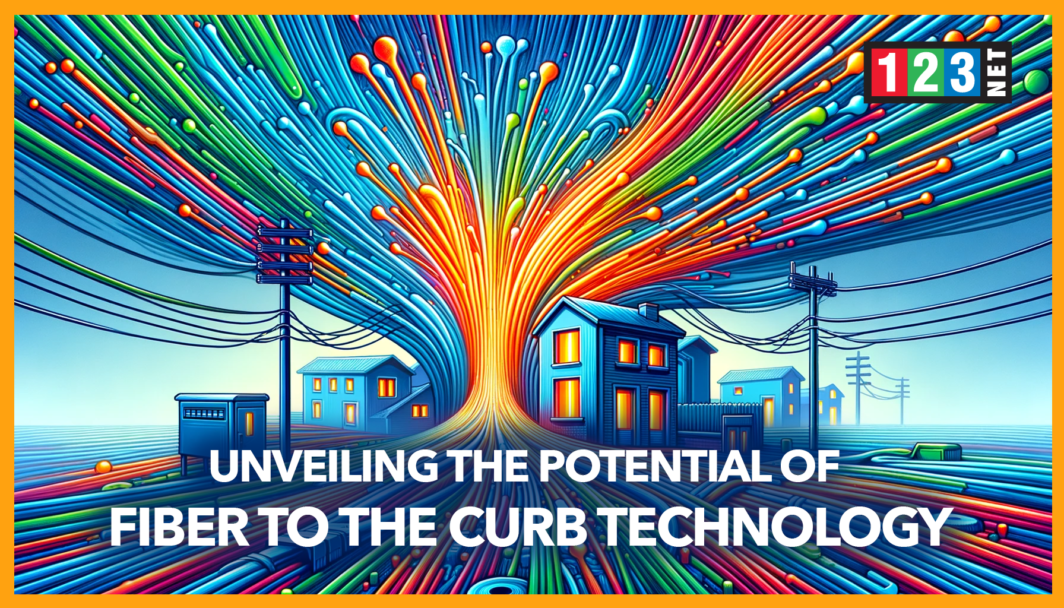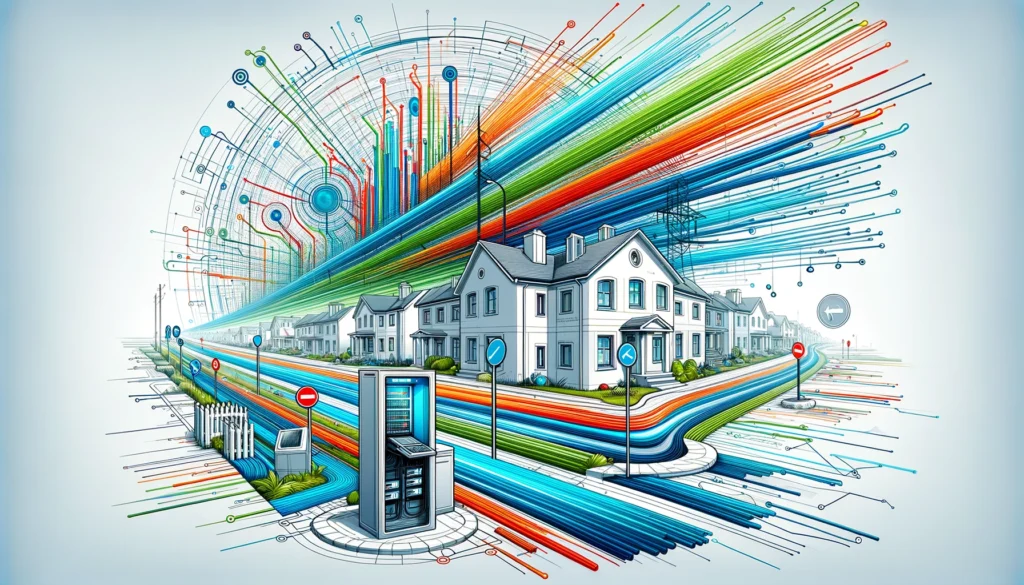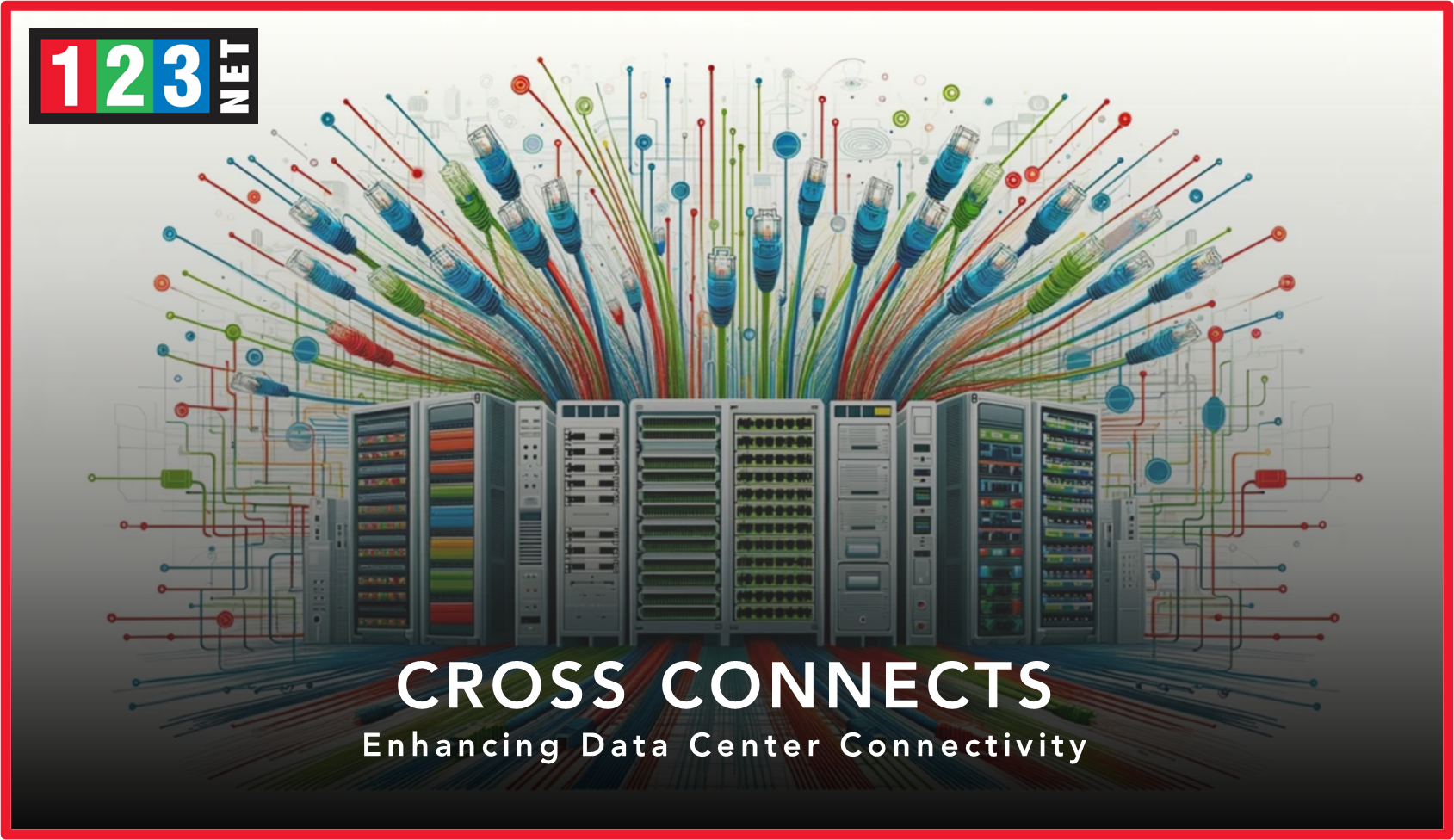
Introduction
In the rapidly advancing world of telecommunications, Fiber to the Curb (FTTC) stands out as a pivotal broadband technology. By extending optical fiber cables to the boundaries of residential and business properties, FTTC significantly enhances internet capabilities, improving speed and connectivity for end-users. This method offers a practical balance between the extensive coverage of Fiber to the Node (FTTN) and the high bandwidth of Fiber to the Home (FTTH), optimizing both performance and cost.
Technology Behind FTTC
Understanding FTTC Technology
Fiber to the Curb (FTTC) is a hybrid broadband deployment technology that strategically places fiber optic cables close to the end-user. It is not directly into their premises. Typically, these cables are extended to a nearby cabinet or a similar termination point that can be just a few meters away from residential or business buildings. From this juncture, the existing copper or coaxial cables take over, completing the connection to individual premises. This method leverages the existing infrastructure. It helps in managing costs and simplifies the installation process compared to more invasive methods.
Comparison with FTTH and FTTN
FTTC finds its niche between two other prominent fiber deployment strategies: Fiber to the Home (FTTH) and Fiber to the Node (FTTN). Unlike FTTH, which extends fibers directly into the home. this is resulting in higher installation costs and longer deployment times, FTTC reduces both by stopping at the curb. However, it offers a significant upgrade over FTTN in terms of reduced latency and higher potential speeds. This is because the fiber reaches closer to the user, shortening the length of the slower copper paths.
Components of an FTTC Installation
The key components of an FTTC installation include the optical fiber cables, the curb-side cabinet, and the final copper or coaxial cable connections. The optical fiber segment is responsible for data transmission at high speeds over long distances with minimal loss. This is making it ideal for the backbone of the internet. At the curb, a cabinet houses connections where fiber transitions to copper, which handles the final data delivery. This setup is crucial for ensuring the high-speed capabilities of the network while maintaining the flexibility to use existing infrastructures.
Benefits of FTTC
High-Speed Internet Capabilities
Opting for Fiber to the Curb (FTTC) offers substantial benefits, chiefly its capacity to deliver high-speed internet that competes with the fastest broadband technologies currently available. By significantly shortening the distance that the signal must travel via slower copper lines, FTTC provides a noticeable improvement in data transmission speeds to end-users. This capability makes it an attractive option for both residential and business customers who demand robust, high-bandwidth internet connections for streaming, gaming, and digital communications.
Enhanced Reliability and Maintenance
FTTC systems are highly reliable due to their use of fiber optic cables up to the curb and minimized reliance on copper cables, which are more susceptible to environmental interference and degradation. This configuration not only enhances overall service quality but also reduces the frequency and severity of maintenance issues. The durability and longevity of optical fibers mean that service providers face fewer repair calls and maintenance disruptions, which translates into higher customer satisfaction and reduced operational costs.
Cost-Effectiveness and Last-Mile Connectivity
From a financial perspective, FTTC strikes an optimal balance between installation costs and service performance. It avoids the high costs associated with extending fiber directly into homes (FTTH) while delivering superior performance compared to solutions that only bring fiber to a neighborhood node (FTTN). This cost-efficiency is passed on to consumers, who benefit from lower subscription prices relative to the high speeds and reliability offered. For service providers, the initial investment in FTTC infrastructure is quickly offset by the long-term savings in maintenance and customer retention. Additionally, FTTC significantly enhances last-mile connectivity—the final leg of the network’s connection to the end-user—by boosting the quality and speed of the connection in this critical segment, without the substantial infrastructure overhaul required by more invasive fiber deployments.
Implementation of FTTC
Planning and Deployment of FTTC
The implementation of Fiber to the Curb (FTTC) is a detailed process that begins with meticulous planning and strategic foresight. Initially, telecommunications providers conduct extensive feasibility studies to assess the geographic and demographic suitability for FTTC deployment. This includes evaluating existing infrastructure, potential demand, and environmental considerations. Following the planning phase, the deployment process involves laying fiber optic cables up to a designated curb-side cabinet. This cabinet serves as the central point from which the final copper or coaxial connections extend to individual homes or businesses. The deployment phase is critical, requiring precise coordination to minimize disruption and maximize efficiency.
Challenges in FTTC Installation
Despite the advantages, FTTC installations can encounter various challenges. Logistical issues such as coordinating with local governments for rights of way, managing public disruptions during physical infrastructure upgrades, and handling the technical complexities of integrating new fiber routes with existing copper lines are common. Environmental factors also play a role; for instance, harsh weather conditions can delay installation processes, and difficult terrain can complicate the laying of fiber cables. Understanding these challenges is crucial for anticipating potential delays and formulating effective contingency plans.
FTTC vs. Other Technologies
Comparative Analysis of Fiber Deployment Technologies
Fiber to the Curb (FTTC) is frequently compared with other fiber deployment strategies such as Fiber to the Home (FTTH), Fiber to the Node (FTTN), and Fiber to the Building (FTTB). Each technology offers distinct advantages and challenges, tailored to different deployment scenarios and user needs.
FTTC vs. FTTH
FTTH involves extending fiber optics directly into individual homes, providing the highest speed and reliability. However, this comes with higher installation costs and greater logistical complexity. In contrast, FTTC connects fiber to a cabinet near the users but uses existing copper lines to complete the connection. This reduces costs and eases installation compared to FTTH, making FTTC a more cost-effective solution in areas where direct fiber installation is economically unfeasible.
FTTC vs. FTTN
FTTN extends fiber to a neighborhood node, from which copper lines branch out to multiple premises. This setup offers lower costs but also reduced performance, as the longer copper stretches can degrade signal quality. FTTC shortens the copper run considerably, providing better performance than FTTN while maintaining a manageable cost, making it ideal for communities looking to improve speeds without the extensive groundwork required for FTTH.
FTTC vs. FTTB
FTTB is similar to FTTC but extends the fiber directly to the building, stopping at a common point like a basement. This provides a middle ground in terms of cost and performance between FTTH and FTTC. However, FTTC may still be preferable in residential areas where buildings have individual access points, offering a good balance of individual access and collective cost efficiency.
Choosing the Right Technology
Selecting the right fiber deployment technology depends on specific local conditions, including user density, existing infrastructure, and budget constraints. FTTC often emerges as the preferable choice for its balance of high performance, cost efficiency, and easier implementation compared to FTTH. It is particularly suited for areas where the expense and disruption of full fiber to the premises are not justified. By carefully weighing the pros and cons of each technology, service providers can strategically choose the most appropriate method to upgrade their network infrastructure, enhancing connectivity while managing costs effectively.
Future of FTTC
Trends in Fiber Optic Technology
As global demand for faster and more reliable internet continues to surge, the role of Fiber to the Curb (FTTC) within the broader landscape of fiber optic technology grows increasingly significant. Currently, advancements in fiber optics are primarily focused on enhancing data transmission speeds and expanding capacity to handle more simultaneous connections. This development is crucial as the Internet of Things (IoT) and smart home technologies become more prevalent, necessitating robust and expansive network infrastructures.
Anticipated Advancements in FTTC
Looking ahead, FTTC is set to benefit from several technological improvements. Innovations such as more efficient fiber optic cables and enhanced signal amplification techniques are expected to further boost the performance of FTTC installations. Moreover, the integration of artificial intelligence and machine learning for network management can streamline operations. It is improving the efficiency and reliability of FTTC services. These advancements are anticipated to reduce costs and expand the feasibility of FTTC to a broader range of environments. It is from dense urban areas to underserved rural communities.
FTTC’s Role in Future Network Infrastructures
FTTC is poised to play a pivotal role in the evolution of network infrastructures. It is particularly as a solution that bridges the gap between high-cost, high-performance options and more affordable but less efficient technologies. As internet service providers (ISPs) continue to seek optimal solutions for network upgrades that accommodate increasing user demands without exorbitant costs, FTTC stands out as a strategically viable option. Its ability to leverage existing infrastructure while providing substantial improvements in bandwidth. Latency makes it an attractive choice for ISPs aiming to expand their service offerings and enhance customer satisfaction.

Conclusion
This article has comprehensively explored the many facets of Fiber to the Curb (FTTC). It is from its technical underpinnings to its broader implications for telecommunications infrastructure. FTTC emerges as a hybrid solution that optimally balances cost, performance, and ease of deployment. By using a combination of fiber and existing copper lines, FTTC offers a practical approach to delivering high-speed internet access, making it a compelling choice for both urban and suburban areas.
We have seen how FTTC stands favorably compared with other fiber technologies like FTTH (Fiber to the Home) and FTTN (Fiber to the Node). It is offering a middle ground that addresses both economic and performance criteria. Its implementation can significantly enhance last-mile connectivity, providing reliable and fast internet services that are crucial for today’s digital demands.
Looking forward, the role of FTTC in shaping future network infrastructures seems promising. As technological advancements continue to evolve, FTTC’s adaptability and cost-efficiency will likely see it remain a key component in the global push towards more connected communities. Its impact extends beyond mere technology, influencing economic opportunities, educational resources, and overall quality of life. It is marking its significance in the ongoing evolution of communication technologies.




